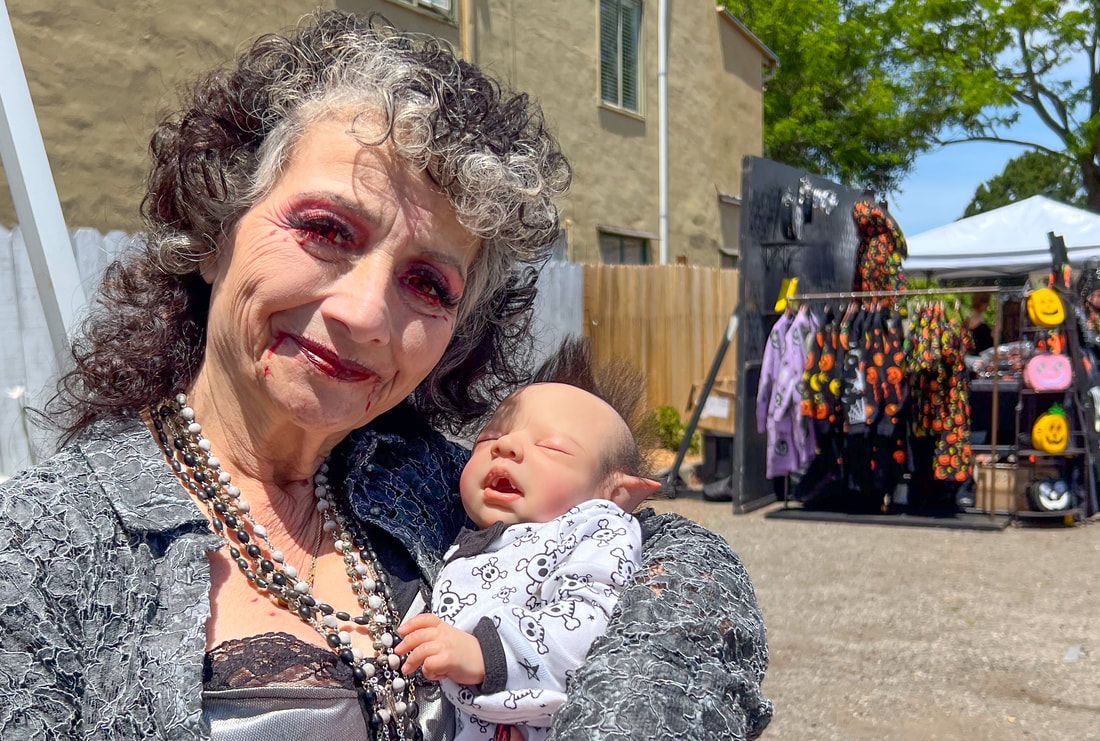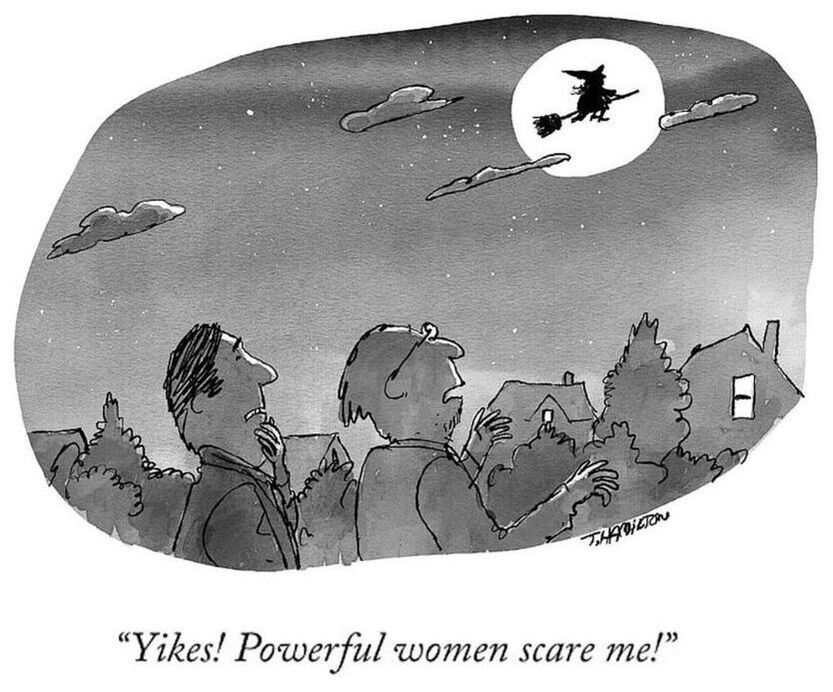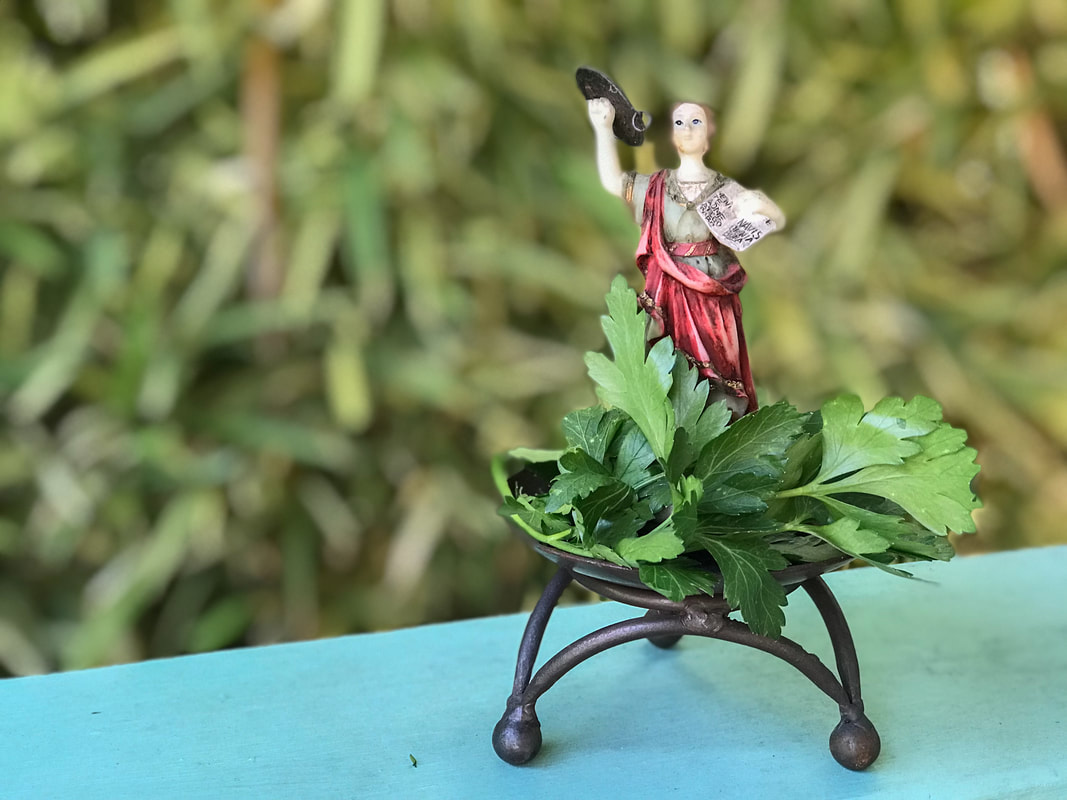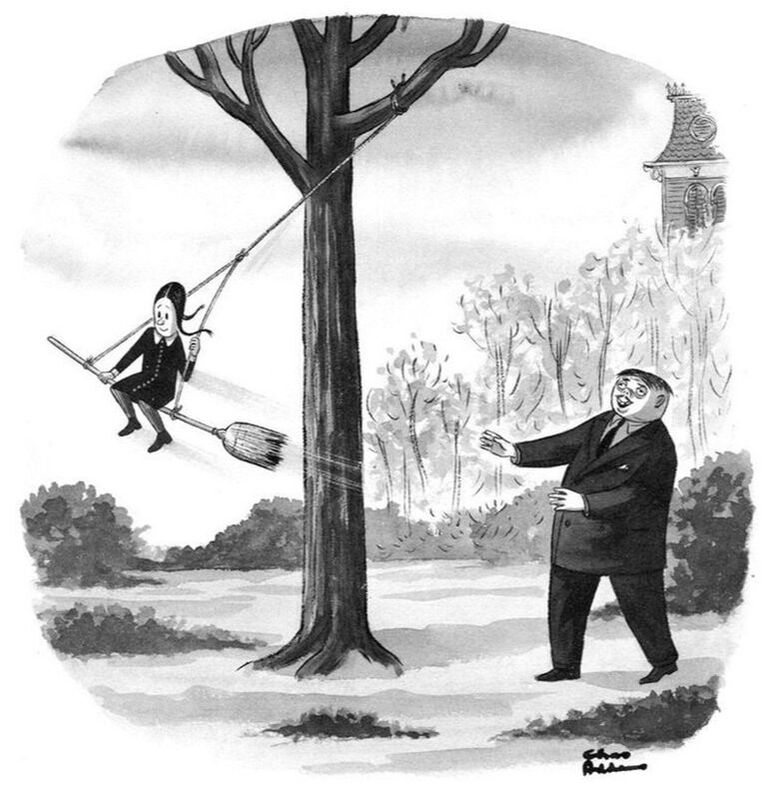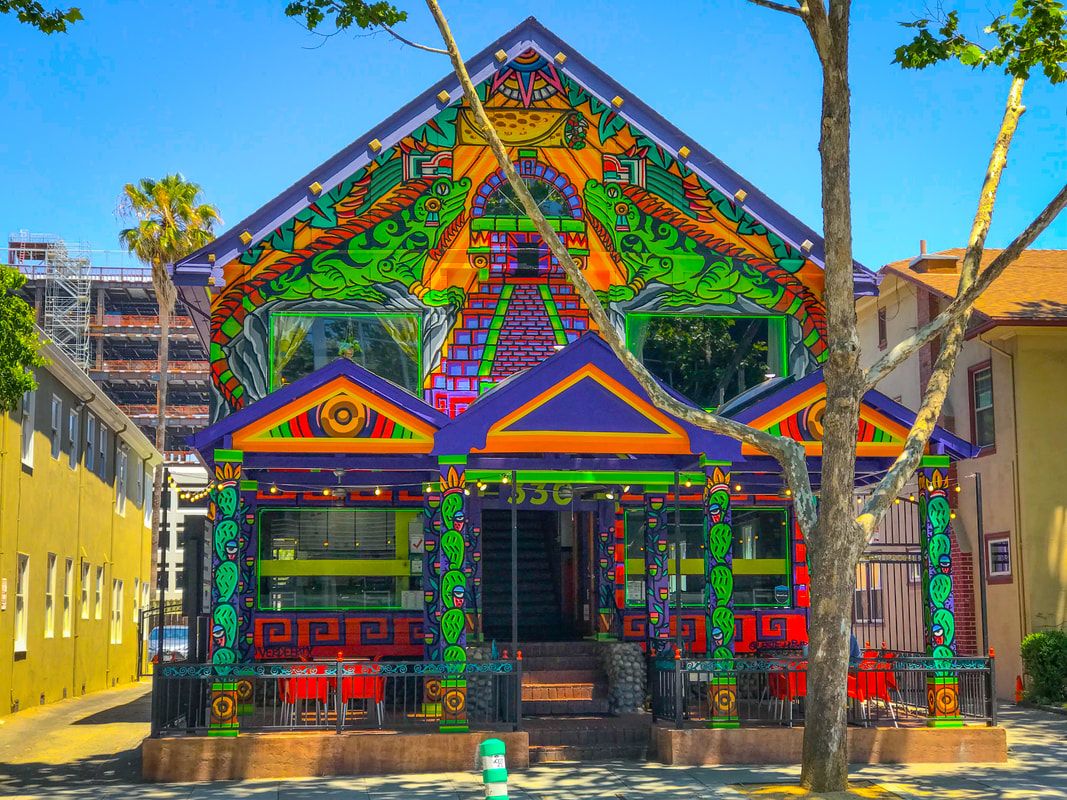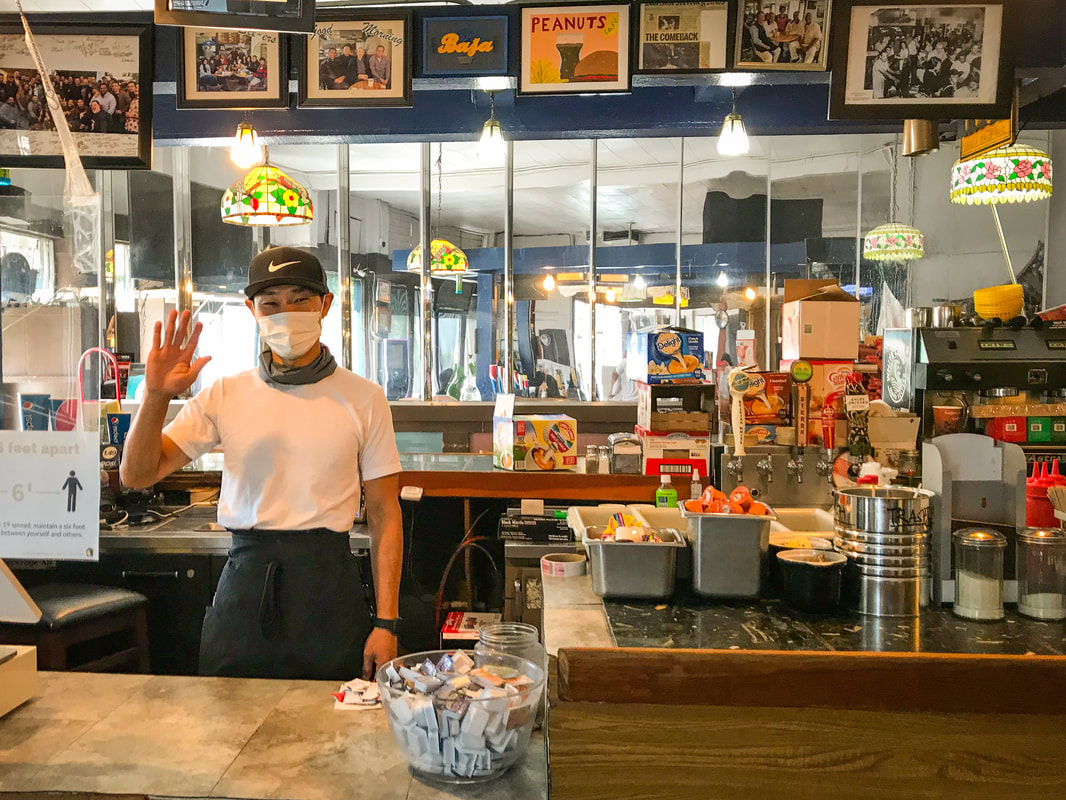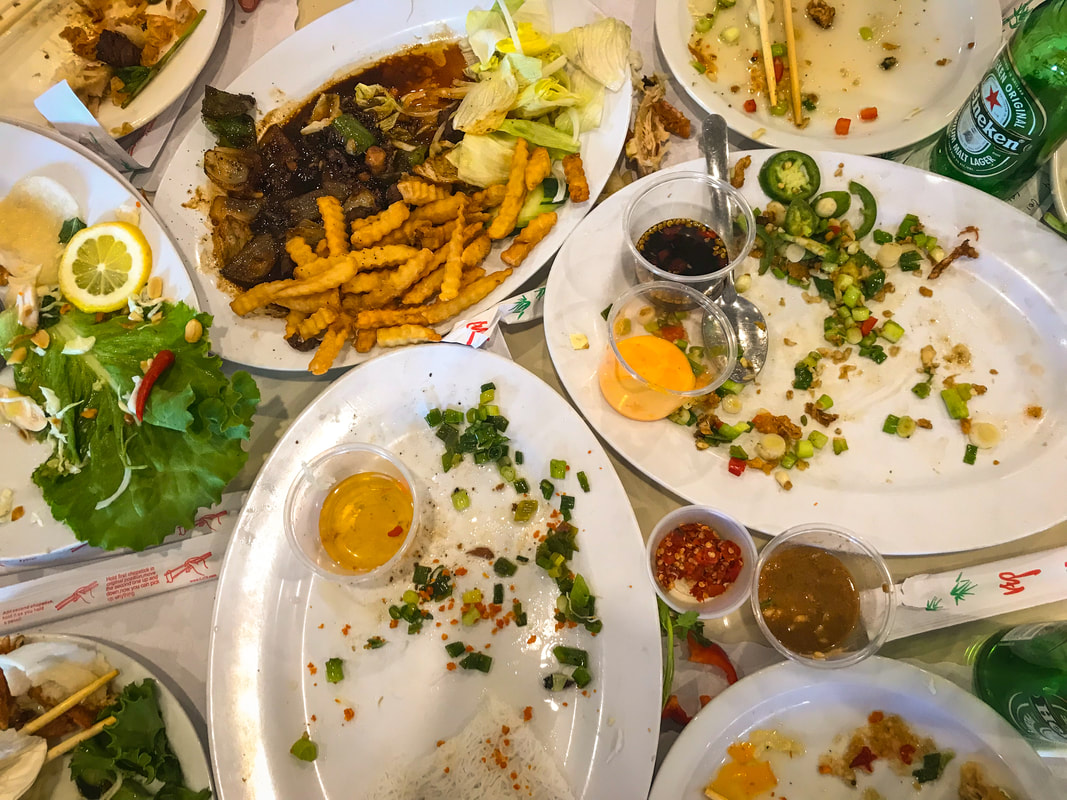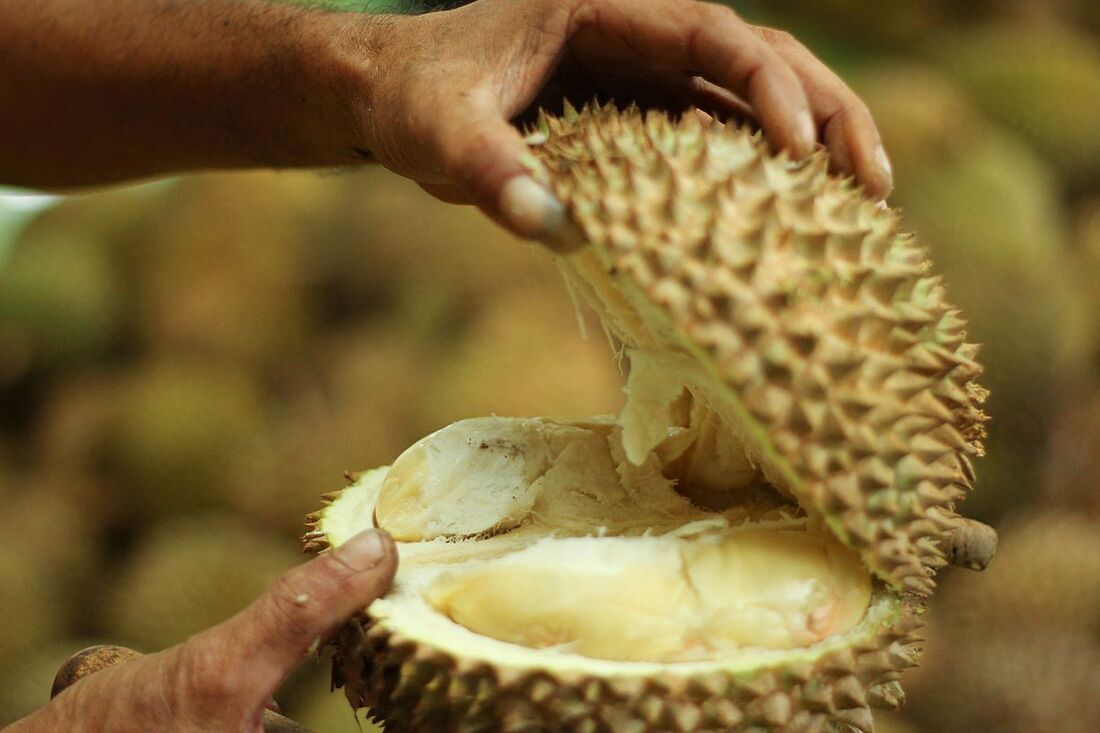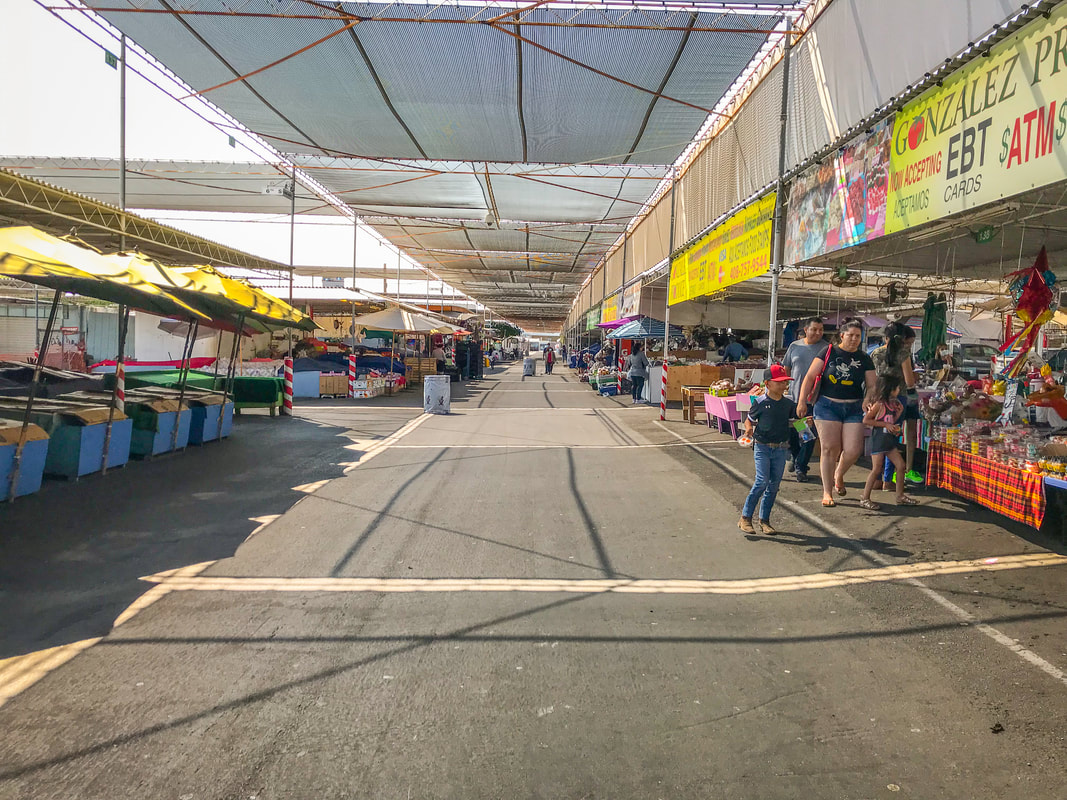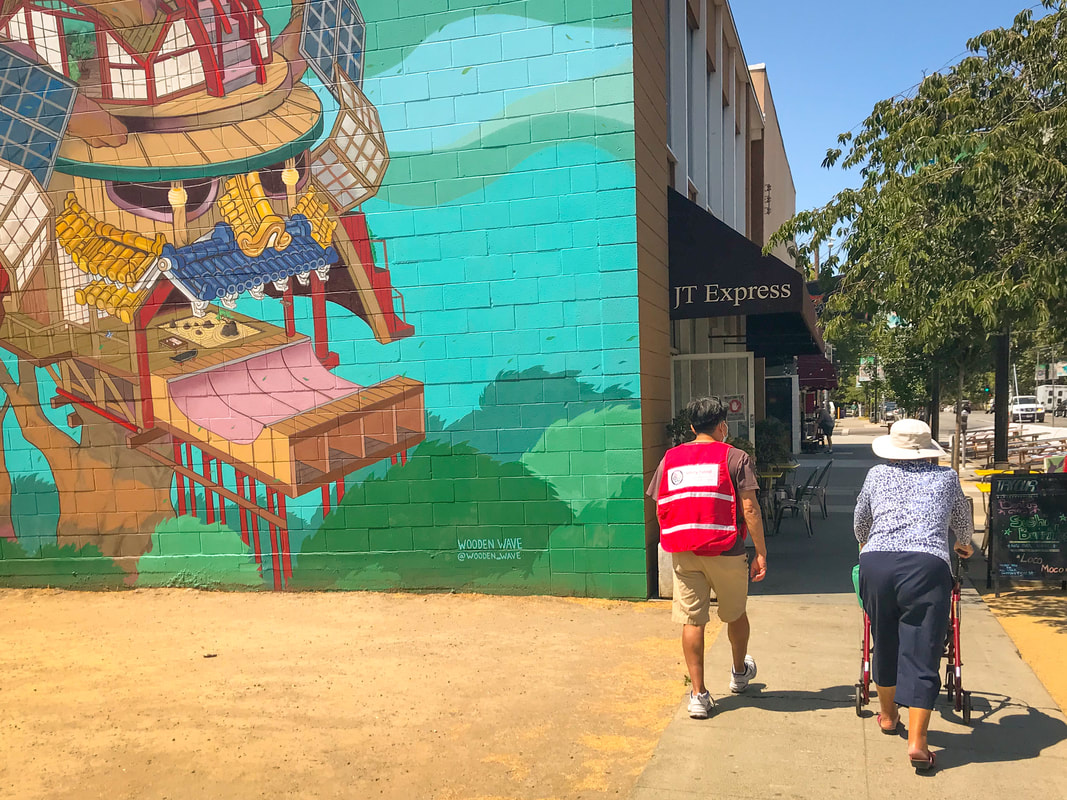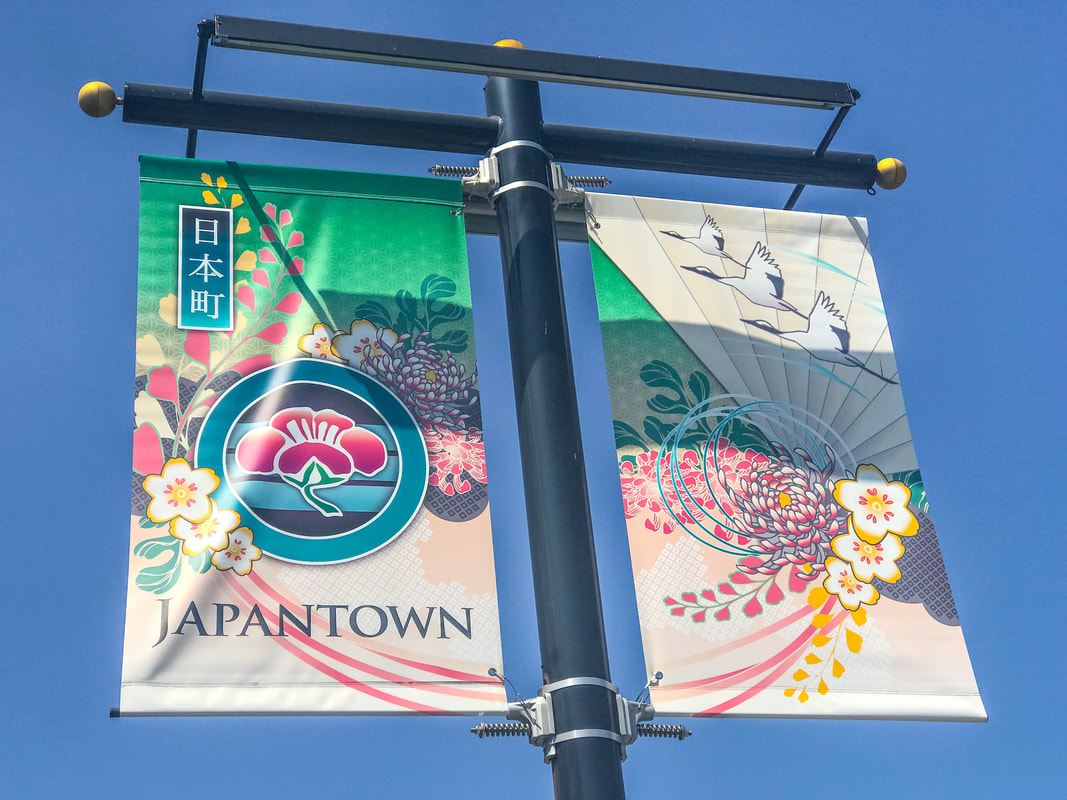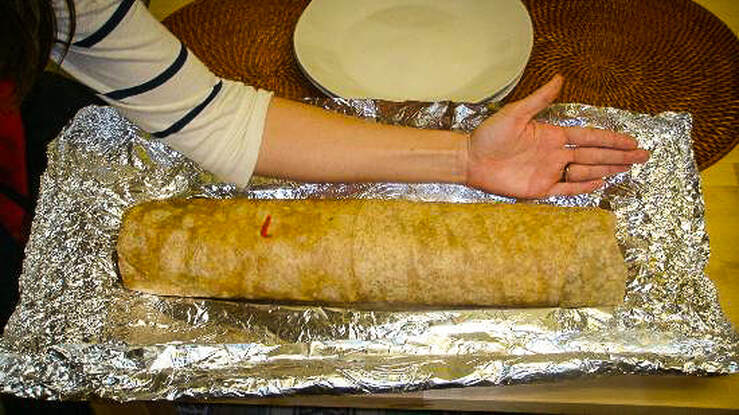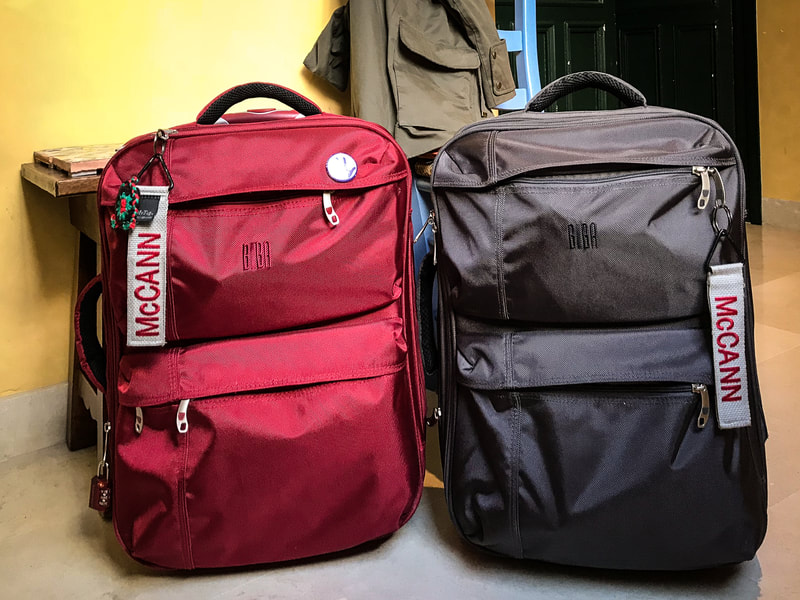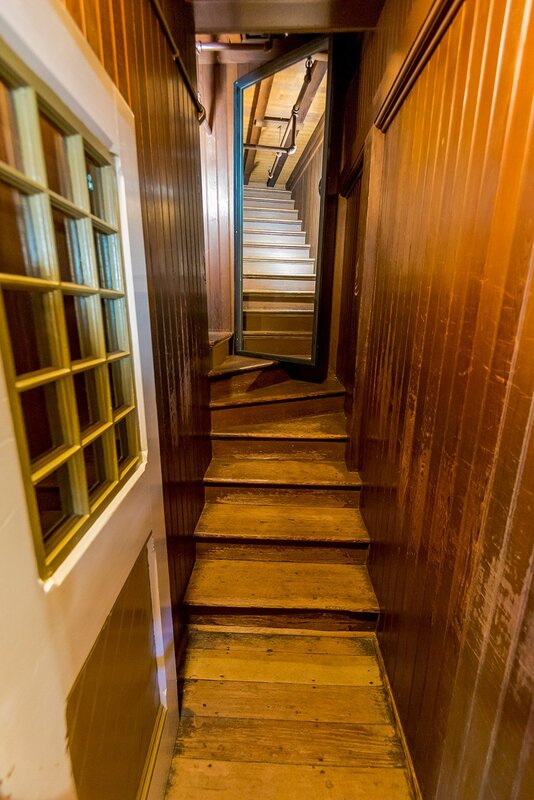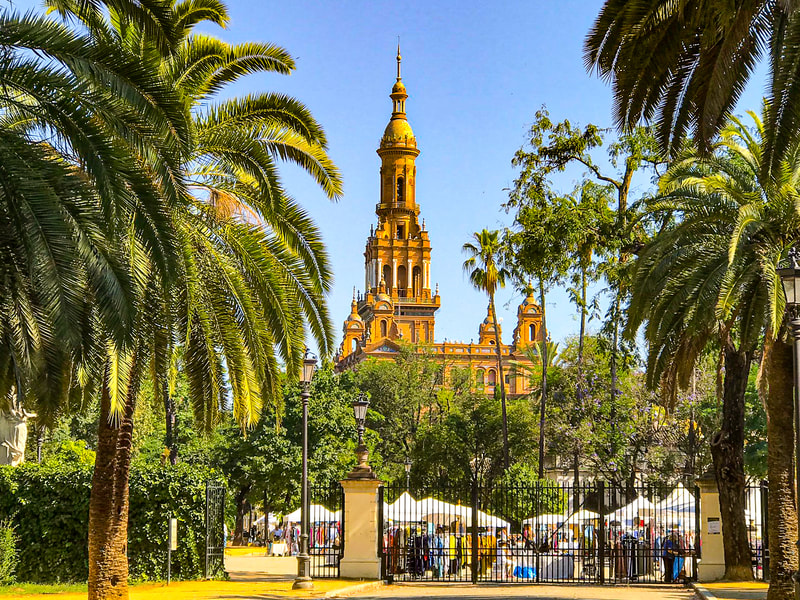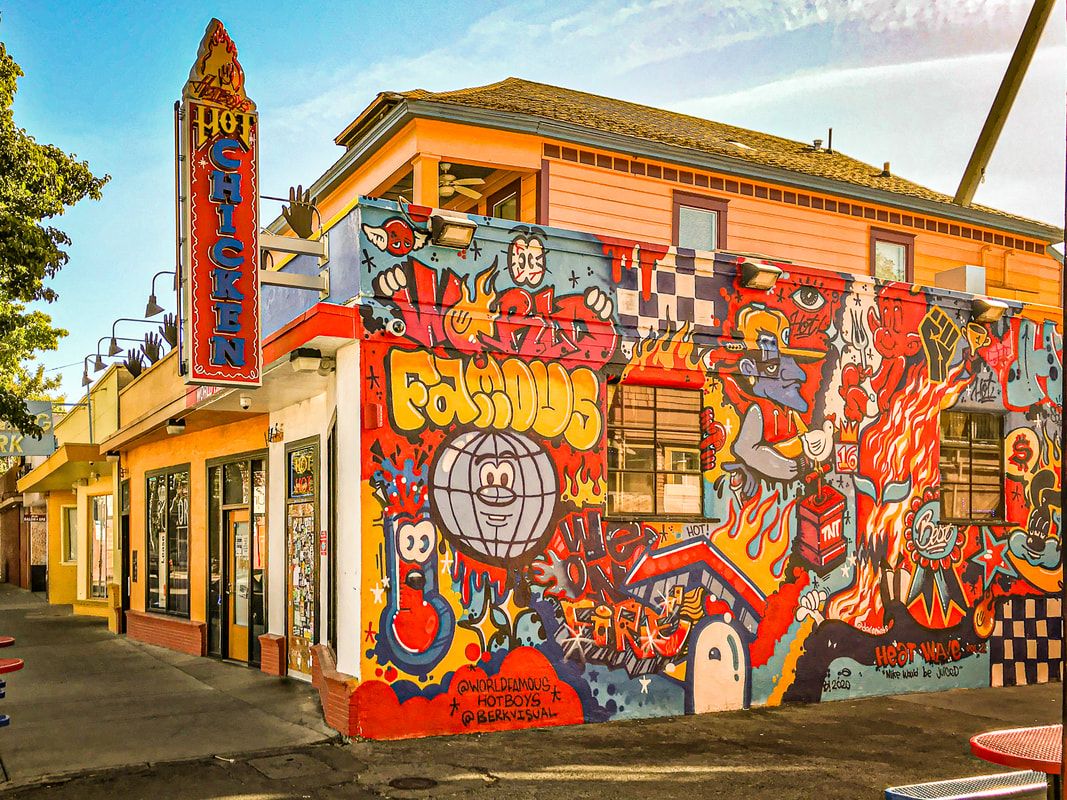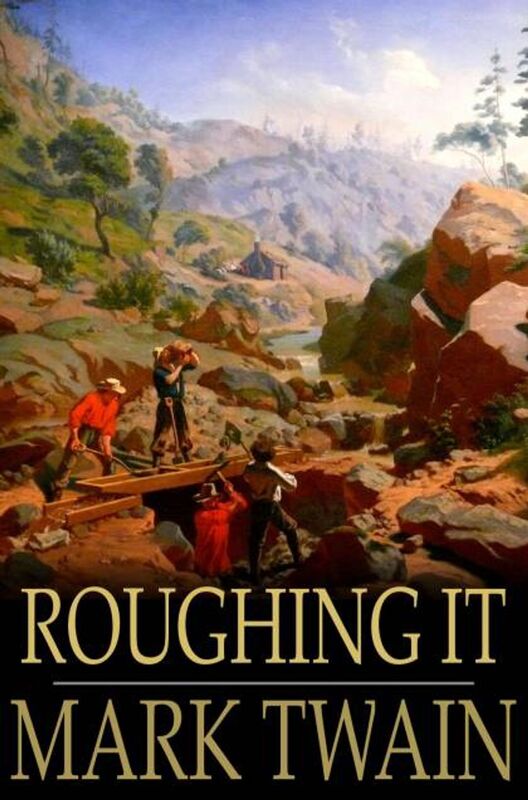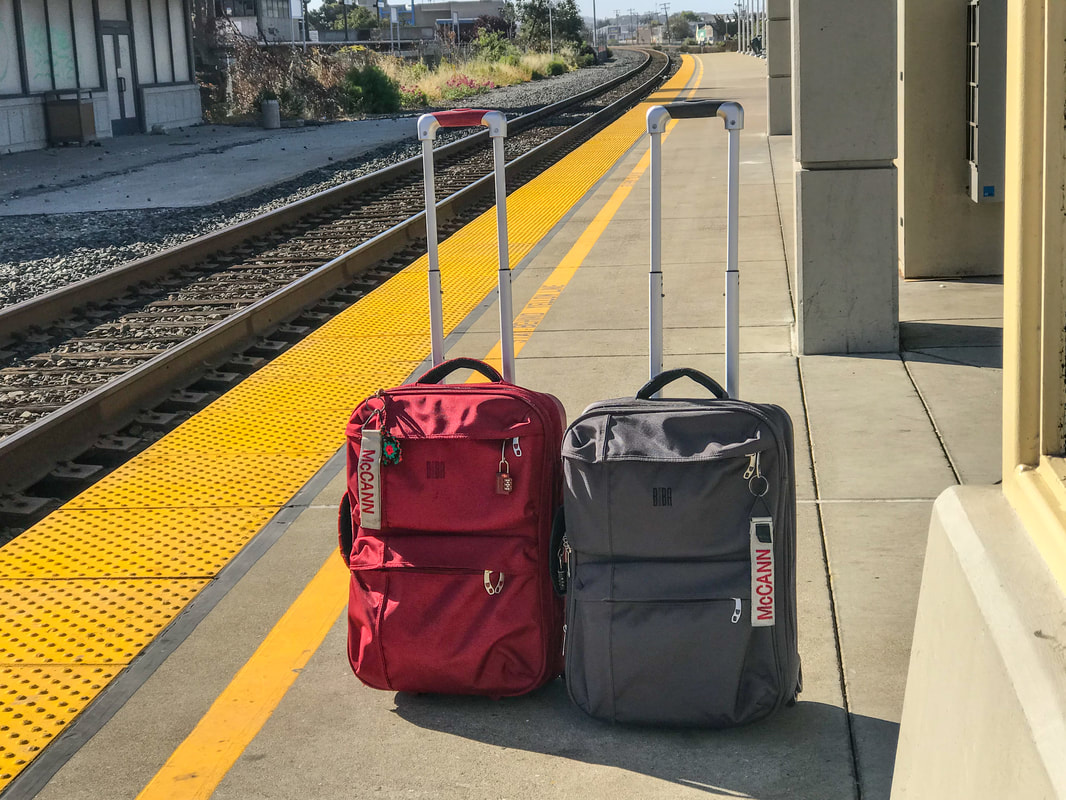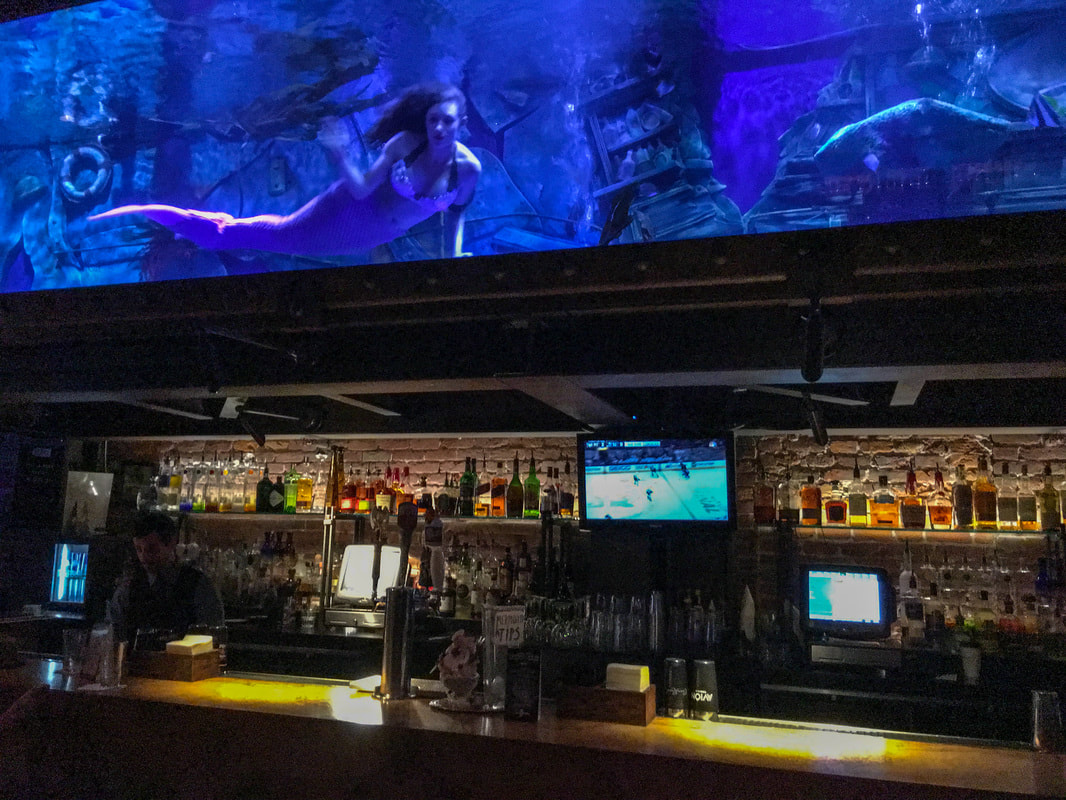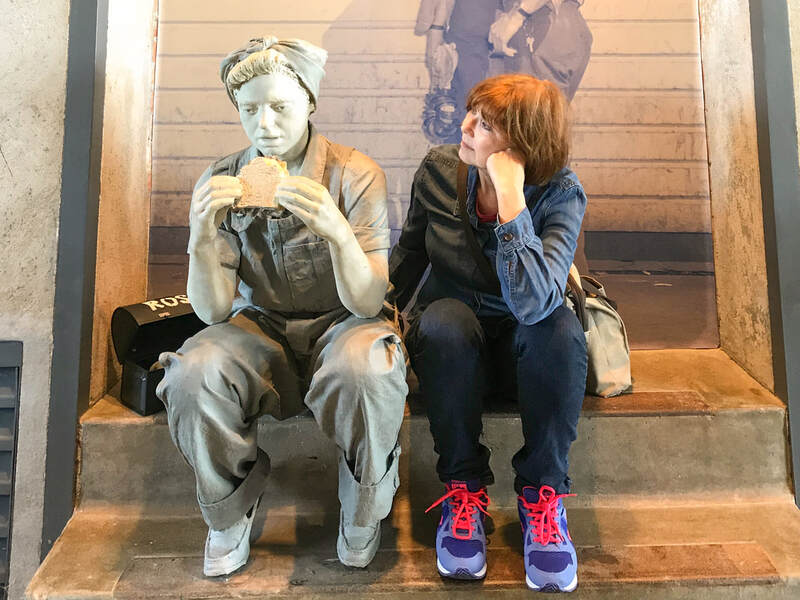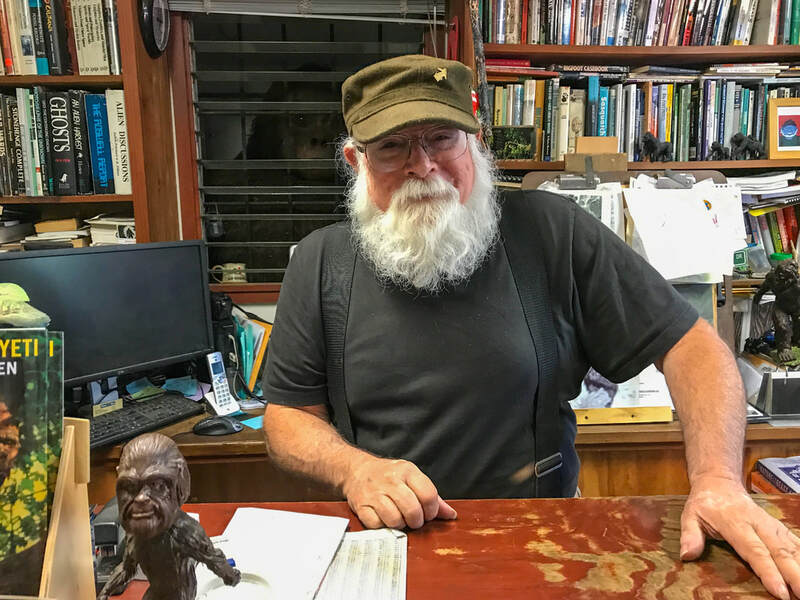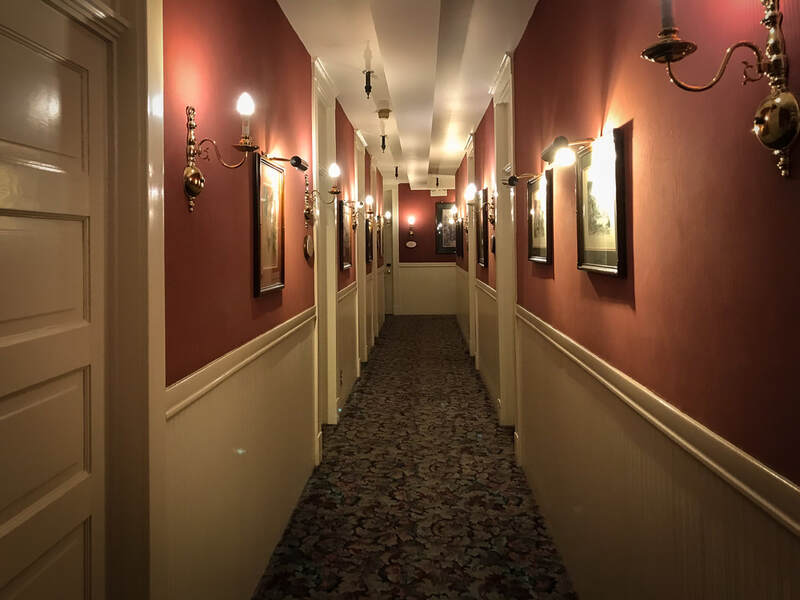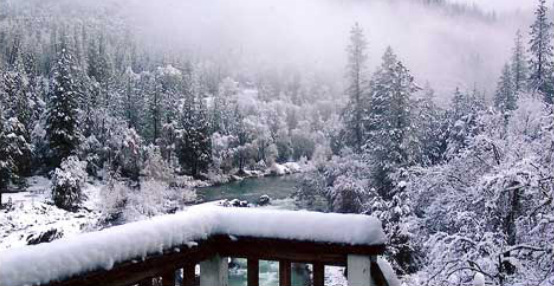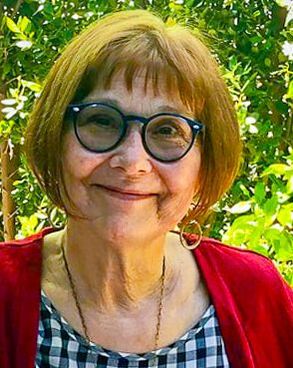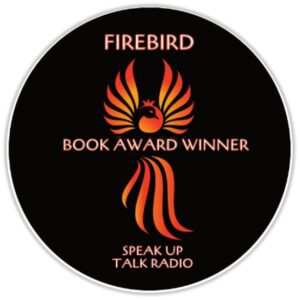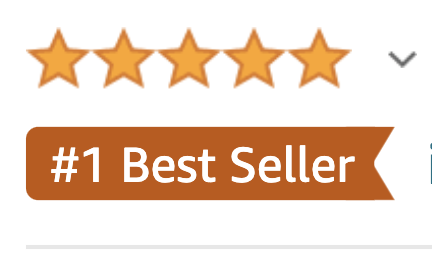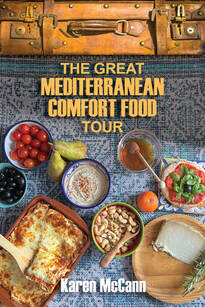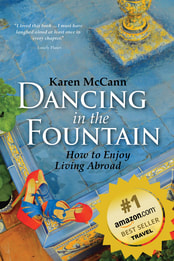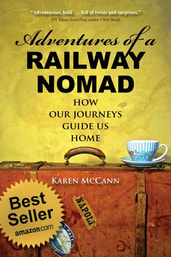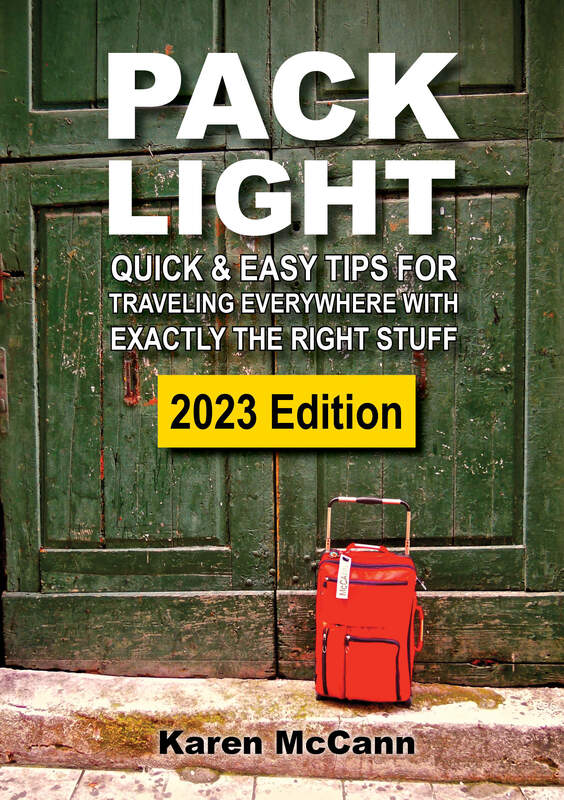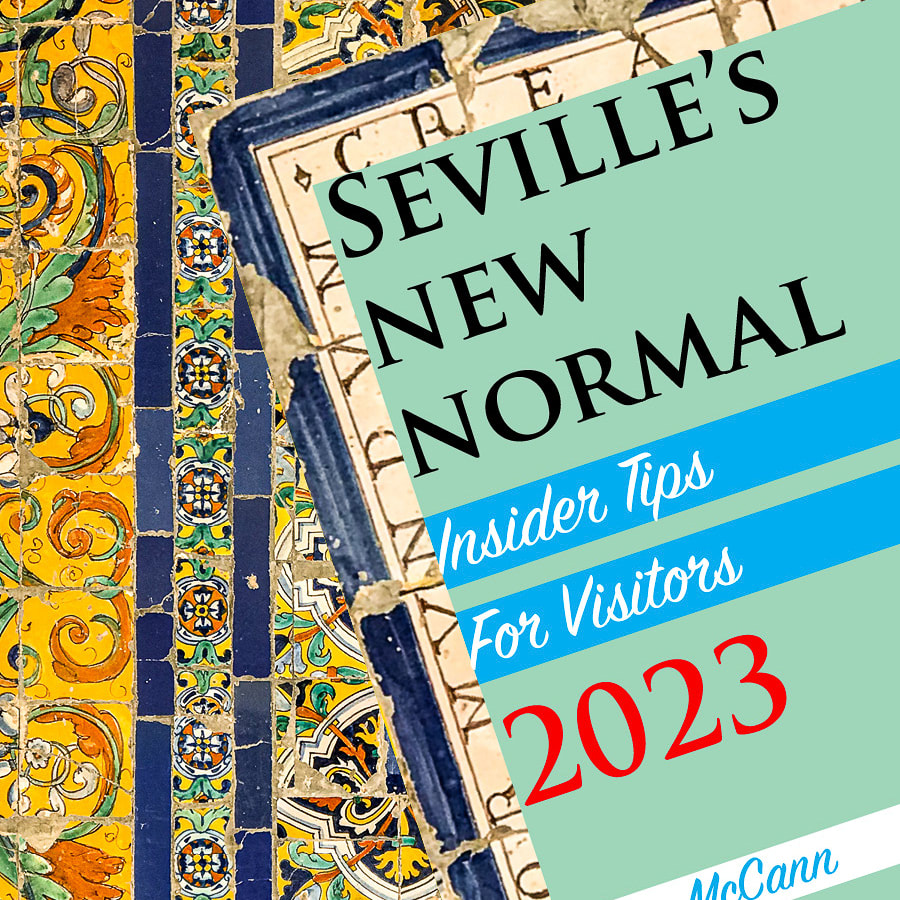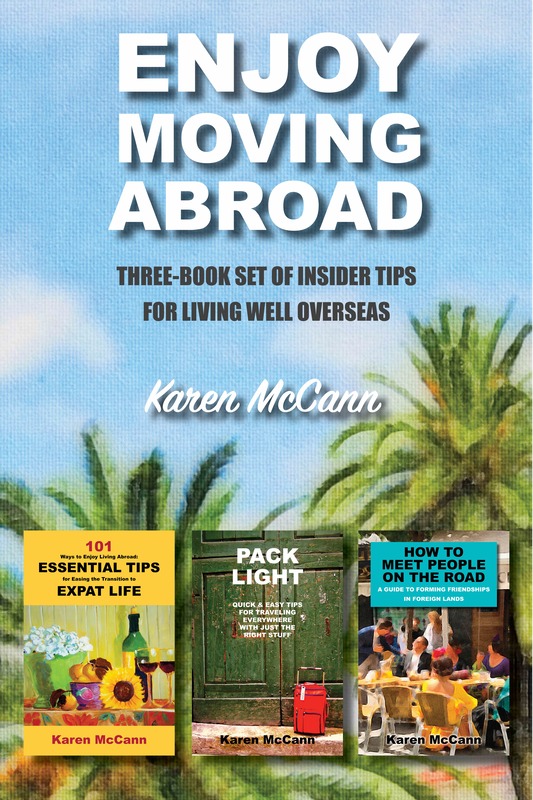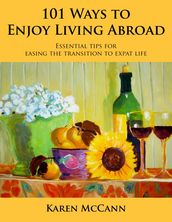|
At first I thought she was cradling a monkey in her arms. Then I realized the grandmotherly goth lady was holding a baby werewolf doll, its wizened little face covered in fine, wavy hair. With a twinkle in her eye, she set down the were-infant and picked up another little bundle of joy. “This is my vampire baby,” she said. “You can see his tiny fangs.” “Adorable,” I said. “And he has your eyes.” The bat ears, though, were all the baby’s own. This was just the kind of outlandishness I’d hoped for at the Macabre Market, “a curious coven of artists and makers inspired by Halloween, the odd, and the macabre.” Posters called it “Halfway to Halloween,” and while nitpickers might point out that technically that holiday was five months away, not six, I don’t suppose we can expect dabblers in the dark arts to be terribly strict about their math. Now before I go any further, let me reassure you that I have not embraced occult practices or goth attire. The Craft is not my path. But I was pleasantly surprised and vastly entertained by much of what I found during my afternoon among modern American witches. Everyone at the Macabre Market seemed to be having a splendid time. Swathed in ghoulish black, often sporting astonishing tattoos and plenty of metal accoutrements, they browsed happily through stalls selling Corpse Freshener soap, handbags gorgeously embroidered with cobwebs, and jewelry that would appeal to Dracula's mother. Despite the noir trappings, the atmosphere was fun and friendly, and everybody I asked was delighted to have their picture taken. As a ballgown-wearing transvestite once told me, “Honey, you don’t dress like this and hope not to be noticed!” We’ve come a long way since the days when witchcraft was a death-penalty offense. Now it’s largely viewed as yet another nonconformist spiritual tradition that gained traction in the rebellious sixties. Many practitioners consider themselves Wiccans, a modernized religion legally recognized by US courts. Contrary to popular belief, they don’t follow — or even believe in — Satan but are instead inspired by nature. And it’s a growth industry. A 1990 poll put the number of practitioners at 8000, by 2008 the US Census Bureau reported 342,000, and recent studies suggest there are 1.5 million. That’s right, witchcraft now has more active practitioners than the mainline Presbyterian church (1.4 million). Today’s covens congregate on TicToc; the hashtag #witchtok alone has amassed more than 19.8 billion views. So what’s the attraction, you ask? “The proliferation of witchcraft reflects two timeless and universal urges: the need to draw meaning from chaos, and the desire to control the circumstances around us,” according to witch Antonio Pagliarulo writing for NBC. “With the dire catastrophes brought on by climate change, wars, and the loss of rights, it’s not surprising that witchcraft appeals to those seeking to mend what’s broken in ourselves and the wider world.” Like me, Pagliarulo was raised Catholic, surrounded by miracles and mysteries. “I myself grew up with Italian folk magic passed down from generations of practitioners who melded pagan customs with Roman Catholicism,” he says. “In petitioning the archangel Michael for protection, for example, I will recite a prayer but also make offerings of wine, bay leaves, and cloves. In addition to venerating Catholic saints, I light candles to the goddess Diana at every full moon and place small bundles of rosmarino, or rosemary, on my altar to honor the dead. This blending of faiths has been a seamless process for me and other folk magic practitioners despite what traditional religious authorities might say.” All this would sound a lot loonier to me if I didn’t have a long-standing habit, picked up from my Seville neighbors, of placing fresh parsley in front of my little statue of San Pancracio, patron of health and work. The logical part of my brain knows this symbolic gesture won’t really help Rich get over his post-flu cough or make it easier for me to find the words to write this post. But symbolic gestures — from a goodbye kiss to saluting the flag — have a reassuring way of grounding us in reality. And who doesn't need more of that? Connecting with nature is one of the best way to feel grounded, according to Fiona Duncan, who teaches an online witchcraft course. Her students, she says, include a physician, a physicist, an epidemiologist, college professors, and published authors. “These people are highly intelligent and emotionally developed and yearn for something more. They believe they can find it (and they can!) through connecting with Nature’s energies and their own, which is what the Craft is all about.” Jayme Moye, a student of Natalie Rousseau's "earth-based wisdom and everyday magic," explains, “The idea is to start to notice how our own physical and mental states — our energy levels, emotions, sleep patterns, and food cravings, to name a few — are in or out of alignment with what’s happening in the natural world.” How we connect with nature is highly individual, which might explain Black Widow Bottles, the oddest of the curiosities at the Macabre Market. “Rich," I exclaimed, "am I really seeing little dead animals in jars?” Looking like they’d strayed from a mad scientist’s laboratory, the mortal remains of snakes, bats, voles, geckos, and other creatures floated behind glass, tagged with prices and backstories. “Did you pickle these animals yourself?” I asked the woman behind the table. Her name, I soon learned, was Tracy, and she was accompanied by her husband, who sat stoically at her side, looking as if he’d rather be off having a root canal or possibly even a limb amputated. “I didn’t kill them,” she said. “They’re all ethically sourced. I preserve them with formaldehyde and suspend them in 70% alcohol.” OK, but what were they for? “People collect them. I’ve been doing this for five years; my house is full of these things.” I glanced at her husband with increased sympathy. That couldn’t be easy for the non-enthusiast. The Macabre Market was held in Alameda, terminus of the first NY to SF railway journey in 1869, former site of Neptune Beach, which gave the world the snow cone and “Pop’s Sicle” (today’s popsicle), and now home to the Feathered Outlaw, a shop dispensing metaphysical supplies and services. Naturally, I popped into the shop for a look around. The shop was suitably dim and mysterious, with a cheerful young staff, esoteric products, and a tarot reading going on in the back corner. I learned it was designed as a safe place for people to explore alternative spiritual paths, a haven for those whose beliefs and lifestyle left them feeling marginalized and misunderstood. Witchcraft remains far from mainstream and no doubt still attracts a darker element today. Having been raised in the faith that gave us the Spanish Inquisition and will be forever identified with pedophile priests, I know any belief system can be perverted in horrifying ways. All I can say is that my experiences at the Macabre Market and Feathered Outlaw were considerably more wholesome and family friendly than I expected. As a writer, Nutter, and spiritual explorer, I enjoyed meeting modern-day American witches. I didn’t bring home any magic spells, baby vampires, or Corpse Freshener. But I came away with a new understanding that for some, embracing this practice enables them to be welcomed into a community and open themselves to the world in entirely new ways. And that’s its own kind of magic. JUST JOINING US? THE NUTTERS' WORLD TOUR SO FAR IN PROGRESS: THE NUTTERS' TOUR OF CALIFORNIA My Close Encounter with the Skeptic Society (Outer Space) The Nutters' Guide to Modern Comfort Food (My Kitchen) Relationships: Do Humans Stand a Ghost of a Chance? (Hangtown) For Nutters, There's No Place Like California (Petaluma) Can Artificial Intelligence Help Me Plan the Next Nutters Tour? RECENTLY COMPLETED: THE NUTTERS' TOUR OF SPAIN Spain Never Runs Out of Offbeat Curiosities (Zaragoza, Barcelona, Tarragona) I Travel Deep into the Heart of Nuttiness (Palencia & Pamplona) Road Warriors: Let the Good Times Roar (Léon & Oviedo) Travel Alert: You Can't Always Get What You Want... (Madrid & Burgos) Gobsmacked at Every Turn but Embracing the Chaos (Jaén & Valdepeñas) All Aboard for the Nutters Tour of Spain (Packing & Organizing) WANT TO STAY IN THE LOOP? Subscribe to receive notices when I publish my weekly posts. Just send me an email and I'll take it from there. [email protected]. Curious? Enter any destination or topic in the search box below. If I've written about it, you'll find it.
6 Comments
It took me days to realize what was so weird about downtown San Jose. At first, second, and third glance, it’s a pretty good downtown, with wide avenues, a few solid old buildings, glittering skyscrapers, plenty of housing, and cheerful banners urging the populace to dream and thrive. It’s not breathtaking, like Rome or Bangkok, but as the hub of Silicon Valley, it is one of the wealthiest cities on the planet. San Jose glows with the glossy sheen of new money. It’s not hard to see why it’s rated the fifth happiest city in America. “Well, it certainly didn’t earn that rating through the food,” I grumbled the first night, when Rich and I couldn’t find anything downtown but cookie-cutter food chains and ended up with gloppy pasta and wine that tasted considerably cheaper than its price tag. We had better luck the next morning at Peanuts, an unpretentious café near San Jose State University. Our fellow customers included four uniformed firefighters, a sex worker, three nerdy guys, and two youngsters who clearly had just crawled out of bed after a night of energetic frolicking. It was the kind of place where you help yourself to the coffee, and after my third cup I struck up a conversation with Joseph, who’d taken over Peanuts when his uncle retired. “Happy? Yes, San Jose is a happy city,” Joseph said. “Most people who come in are happy-go-lucky. It’s very diverse. Everyone hangs out with everyone else.” That refrain was repeated in countless conversations over the next few days. San Jose is rated the most diverse city in America and my own unscientific, statistically insignificant, random observations agreed. Nearly 400,000 people from around the world have been drawn there by tech companies such as Zoom, Adobe, eBay, PayPal, and Google — which is building a new downtown campus with 7.3 million square feet of office space, 4,000 housing units, and 15 acres of parkland. Are diversity and jobs enough to make this town soar high on the happiness charts? The cost of living is more than double the national average, and the $1 million median home price is twice California’s average, four times America’s. True, San Jose enjoys superlative weather, but if we’ve learned anything from the Nordic countries’ high rankings on the happiness index, weather doesn’t count for much. Then it hit me: maybe San Jose wasn’t happier than other cities — maybe it just thought it was. Long ago I’d worked at the information desk in UC Berkeley’s student union and asked hundreds of people where they were from and if they liked it. The only ones who waxed enthusiastic about their home town? Bostonians. Now, Boston’s a great town; I know, because I moved there for ten years. But Boston isn’t the only decent place to live in the USA; it just happens to have a culture that constantly reinforces the idea it’s the greatest. Seville has the same collective narrative, as do many New Yorkers. Apparently San Jose has that attitude, too. And as we all know, attitude counts. Rich and I were discussing all this at a cantina with plenty of attitude: Iguanas, home to the famous Burritozilla — a five pound, eighteen-inch “hunger killer” burrito. Eating a whole one earns you a free t-shirt — and lifetime’s bragging rights. “Does anyone really order that?” I asked the Louis, the cook. He grinned. “Yep. One woman ate it in a minute thirty-two seconds. Her name is Molly. Look her up on YouTube.” Wow, that woman can eat! I’m no Molly, but I did my best to consume my share of San Jose’s Caribbean, Greek, Portuguese, French, Mexican, and Vietnamese fare. At the popular Nha Trang, our friend Joe showed off his fluent Vietnamese ordering an insane number of dishes — which we heroically managed to finish. All this time, I kept trying to figure out what was bugging me about San Jose’s downtown. When it finally came to me, I was shocked and aghast. “Hey, there’s no retail around here. We haven’t seen a single clothing store, bookshop, sporting goods place, or food market anywhere downtown. Does everyone do all their shopping online? Even groceries? Is retail really dead? Say it ain’t so!” We decided to find out. First we hit Little Saigon’s Grand Century Mall, where a marble statue of 13th century Vietnamese naval hero Tran Hung Dao presides over shops selling art, trinkets, and cosmetics. As we approached a small grocery store at the back, my nose began to wrinkle. “What’s that hideous smell? Decaying chicken? Rotting garbage?” “No, durian.” Rich had told me about Asia’s beloved yet stinky fruit, but now I realize that’s like talking about the scent of skunk; you can’t really appreciate it until you smell it for yourself. Yowzer! They say it tastes like almond custard, but I don’t care; I have added “avoiding durian” to my lifetime goals list. Next we visited the Barryessa Flea Market, said to be a vast treasure trove with a farmer’s market and a carousel. Sadly, on the weekday we visited, it was a ghost town, with a few dispirited vendors listlessly eyeing the handful of customers drifting down the aisles. “They just put in a BART station,” Rich explained. “The family that’s owned this property since the 1960s sold the land to real estate developers. The flea market is shrinking from sixty acres to five.” “I feel like I’m presiding over a funeral on the Titanic. Where else can we try?” We considered Santana Row, said to have all the high-end shops we’d find in other cities, but instead, we went to check out Nihonmachi (Japantown). And here’s where I really fell in love with San Jose. For a start, there was actual retail — not much, and mostly closed because of Covid, but still, you could actually go into some buildings and purchase things, just like you used to do in the old days before Amazon ruled the earth. There was an atmosphere of cheerful bustle and plenty of colorful street art. One poster read: “Stop Asian hate. Protect the elderly.” I noticed an older woman with a shopping bag pushing a walker down the street, chatting companionably with a young man in a vest marked “Safety Patrol.” He was part of a volunteer group protecting vulnerable residents while they go about their errands. Seeing this in action was heartwarming. Knowing why it was needed? Heartbreaking indeed. A century ago, San Jose was nicknamed “the valley of heart’s delight” for its bountiful crops and the entrepreneurial attitude that gave the world its first radio station, first computer hard drive, and first Grateful Dead performance. Today people still arrive there from all corners of the earth seeking their heart’s delight: the chance to create technology that will reshape the future. “Two million people live in Silicon Valley,” said journalist Ben Smith, “and one million of them believe they've discovered the next big thing.” Perhaps that’s what makes San Jose so happy — it’s a place that encourages you to dream big, even if it’s only about your chances of someday consuming an entire burritozilla. Wondering how 182 US cities were chosen and rated for happiness? See the methodology here. About to write and ask me why I didn't visit San Jose's most famous landmark, the Winchester Mystery House? We went a few years ago on Our Magical Mystery Tour of California's Roadside Attractions. YOU MIGHT ALSO ENJOY CLICK HERE
to sign up for my weekly travel tips and commentary about life, road trips, and happiness. FEEL FREE TO SHARE this article with family, friends, colleagues, and anyone who is curious about whether the road to happiness lies through Silicon Valley. https://www.enjoylivingabroad.com/my-blog/an-joe-no-money-cant-buy-happiness-but What do you think of California? Frank Lloyd Wright embraced the continental tilt theory that everything loose rolls to California. (True enough.) Truman Capote sneered, “It’s a scientific fact that if you stay in California you lose one point of your IQ every year.” (False, I hope.) Author Edward Abbey said, “There is science, logic, reason; there is thought verified by experience. And then there is California.” But as a fourth generation Californian whose family arrived by covered wagon back in the day, I feel the best description comes from Mark Twain’s Roughing It. “It was a splendid population — for all the slow, sleepy, sluggish-brained sloths stayed at home — you never find that sort of people among pioneers — you cannot build pioneers out of that sort of material. It was that population that gave to California a name for getting up astounding enterprises and rushing them through with a magnificent dash and daring and a recklessness of cost or consequences, which she bears unto this day — and when she projects a new surprise the grave world smiles as usual and says, ‘Well, that is California all over.’” To this day my home state remains a dizzying mix of can-do and anything-goes, a living embodiment of the saying “If you’re going to do something, you might as well go too far.” Last Friday I was gobsmacked to discover this was true of The California Museum as well. It was my first visit, and knowing the museum was partly sponsored by state funds, I assumed I'd find a pious whitewash of our checkered past. Instead it showed the good, the bad, the ugly, and the outlandish boldness for which the state is famous. But before I get into that, I would like to pause and point out that the really astounding part of the story was finding myself actually standing there, in our state capital Sacramento, on my first road trip in over a year. Ever since Rich and I made the harrowing journey from Seville to California on May 18, 2020, we’d hunkered down in our San Anselmo cottage feeling lucky to be alive and determined to do whatever we could to stay that way. I actually slept in my own bed for 373 consecutive days — a lifetime record! But with 51% of the state fully vaxxed, and our governor declaring June 15 the end of mask mandates and the reopening of just about everything, even my paranoia is crumbling fast. When four friends suggested a two-night excursion to Sacramento — aka The Big Tomato, The City of Trees, and Farm-to-Fork Capital — Rich and I decided it was finally time to drag our suitcases out of the attic and venture further afield than our backyard and the local supermarket. We headed northeast on a train so sparsely occupied that we found ourselves in sole possession of the California Zephyr’s roomy observation car. Arriving in Sacramento was like walking into one of those sci-fi movies where everyone’s been vaporized by aliens, leaving just a pitiful remnant of humanity wandering the Earth. We hardly saw a soul as we ambled along the broad, tree-lined streets, admired the handsome Capitol grounds, and meandered past sweet old bungalows and stately Victorians. Restaurants, shops, and museums were mostly open; often we were their only customers. Their proprietors and staff could hardly have greeted us with more enthusiasm if we actually had been the last humans on the planet. Sadly, the Dive Bar featuring professional mermaids (yes, I mean women dressed as mermaids) that Rich and I visited in 2016 was closed due to Covid. And the once-famous Zombie Walks died out somewhere around 2017. When I broke the bad news to our group a few days before departure, Pete replied, “No mermaids? No zombies? Why bother?” Even without those attractions, we managed to find plenty to occupy us, including the Railroad Museum, dinner on the deck of the Delta King riverboat (now a haunted hotel), and a Local Roots Food Tour culminating in what was possibly the best gelato I’ve ever had (yes, even compared to Italy’s). We had drinks in the Citizen Hotel’s Scandal Lounge, it’s dark corners and old-school furnishings artfully arranged to make us feel like corrupt politicians making shady deals with nefarious characters. Full disclosure: we stayed at the Citizen and didn’t see anyone who appeared the slightest bit nefarious. Very disappointing, obviously. Our last stop was The California Museum, where we were greeted by a large wooden bear wearing a mask (which will presumably be ceremoniously removed on June 15). I became immersed in exhibits about the contributions and hardships of Asian Americans in my state, and that’s when things got very real. I grew up hearing stories about the abuses heaped on Chinese railway workers and later upon Japanese Americans interned in concentration camps during World War II, but standing in front of those displays, I grew increasingly sad and ashamed. I read the first-person stories, saw a recreation of the pitiful cramped barracks in the internment camps (where a good friend of mine spent her teenage years), and absorbed the full details of the xenophobic laws defining Asian Americans as second class citizens. Employers exploiting foreign workers encouraged racism in the community, laying the groundwork for generations of prejudice and today’s Asian hate crimes. On one wall was a video of George Takei, known to Star Trek fans as Mr. Sulu, helmsman of the USS Enterprise. “I am the grandson of immigrants from Japan who went to America, boldly going to a strange new world, seeking new opportunities. My mother was born in Sacramento, California. My father was a San Franciscan. They met and married in Los Angeles, and I was born there,” he says. “I spent my boyhood behind the barbed wire fences of American internment camps.” Still reeling from those images, I found myself in an exhibit inviting me to become a “unity activist.” What’s that, you ask? It’s about celebrating diversity, organizing the community to protect human rights, and defending the value all people. Amen to that! There were photos of Native Americans occupying Alcatraz fifty years ago, the protest that led to the Americans with Disabilities Act in 1990, and people who, like the grumpmaster I wrote about last week, refuse to be defined by their gender, ethnicity, or physical appearance. Fairly radical stuff for a museum that’s partly funded by taxpayer dollars! I had my photo taken holding a poster about equality, proud to take my place as a permanent part of the unity activist exhibition. All in all, we had a grand time in Sacramento, even if we didn’t see the Delta King’s ghost, hobnob with nefarious politicians, or encounter large numbers of fellow humans. After June 15, I expect things will get livelier. In the meantime Rich and I are busy planning other road trips to visit family in various parts of the state. Up to now I hadn’t considered a detour to Lake Tahoe, but I might have to revise that. “Three months of camp life on Lake Tahoe,” wrote Mark Twain, “would restore an Egyptian mummy to his pristine vigor, and give him an appetite like an alligator.” I can’t think of a better way than that to jump start post-pandemic life, can you? YOU MIGHT ALSO ENJOY THINKING ABOUT TRAVEL THIS SUMMER? STAY IN TOUCH!
CLICK HERE to get my weekly travel tips, pandemic updates & comfort food recipes. Feel free to copy this link and share this article with family, friends, and anyone who will be emerging from pandemic conditions into the larger world. https://www.enjoylivingabroad.com/my-blog/our-first-road-trip-in-a-year-the-big-tomato 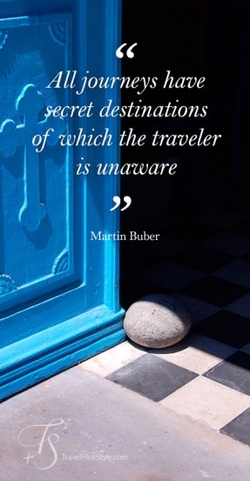 From Travel+Style's Best Travel Quotes From Travel+Style's Best Travel Quotes So yesterday I ran across this marvelous quote on Pinterest, from philosopher Martin Buber: “All journeys have secret destinations of which the traveler is unaware.” And what is our secret objective? I often think it’s an unconscious desire to have travel change us in ways we don’t see coming. Reading Buber’s words, I was suddenly reminded of the fall day nearly three decades ago that Rich and I discovered Washington, California. We’d been driving through the Sierras for hours, surrounded by nothing but trees, when we came across a signpost for a town deep in a remote valley. On impulse, we turned off the main road and began the steep decent through the pines. Eventually we arrived at a sign that read: “Washington Pop. 166 Elev. 2846’.” A minute later we rolled to a stop in front of the general store and got out. The store, warmed by a big, pot-bellied stove, held a wall of used paperbacks, rows of gallon jugs of cheap wine, and stacks of food in cans and jars. “We get snowed in every winter,” the proprietor told us. “The roads get completely blocked. So we’re stocking up now.” I stood there a while, imagining what it would be like to spend each winter cut off from the outside world. Growing up in California, I’d heard stories about old gold mining towns like this one, but I thought they’d vanished years ago. I saw myself tramping through three feet of snow to reach the general store, sitting around the stove with a cup of coffee, propping my feet up to thaw in the warmth of the crackling wood, sifting through a stack of paperbacks to choose my next one, passing the time of day with a random assortment of the other 165 residents. I pictured going home to a cottage where I’d have all the time I’d ever need to write and think and paint, or simply hibernate until spring rolled around. Rich and I have never been back to Washington. But we’ve often talked about what it would be like to pass a winter there, snuggled up in a cabin, hanging out at the general store with the town’s mountain men and women, never-let-go hippies, loners, artists, and other offbeat characters. Just knowing that town existed was somehow important to me, a strange haven for strange times, there if I ever needed that kind of refuge. This morning, when I told Rich about Buber’s quote and how it made me think of Washington, he said, “I wonder what it’s like now.” I pictured the hideous changes I’d seen in other California small towns: the old dirt road transformed into a highway lined with fast food restaurants and gas stations, a cluster of chain stores around the main square, big box megastores a few miles down the road. “I don’t think I want to know,” I said. But it was too late. Rich and Google had found the town. I was astonished and tremendously relieved to discover that, so far as I can tell, it hasn’t changed much. The population has grown to 185. They have Internet connection. But in the ways that matter, Washington still seems to be the land that time forgot. Here’s Su DeCorte, who owns the town’s hotel, talking about finding gold, and about a biker called “Space” and other “manly men” seeing a ghost on the third floor of her hotel. Would I really like to live in Washington, CA? Maybe not. But it is comforting to know that if I ever should want to leave the modern world and go back to the 1960s, or even the 1860s, it’s still there waiting for me, with a pot-bellied stove, a wall of paperbacks, and enough wine to get through the winter.
|
This blog is a promotion-free zone.
As my regular readers know, I never get free or discounted goods or services for mentioning anything on this blog (or anywhere else). I only write about things I find interesting and/or useful. I'm an American travel writer living in California and Seville, Spain. I travel the world seeking eccentric people, quirky places, and outrageously delicious food so I can have the fun of writing about them here.
My current project is OUT TO LUNCH IN SAN FRANCISCO. Don't miss out! SIGN UP HERE to be notified when I publish new posts. Planning a trip?
Use the search box below to find out about other places I've written about. Winner of the 2023 Firebird Book Award for Travel
#1 Amazon Bestseller in Tourist Destinations, Travel Tips, Gastronomy Essays, and Senior Travel
BLOG ARCHIVES
July 2024
CATEGORIES
All
|
